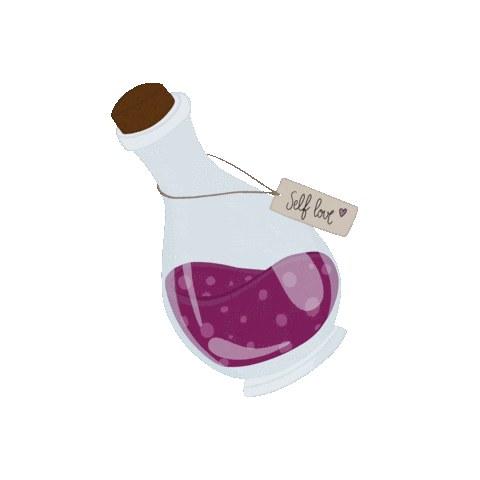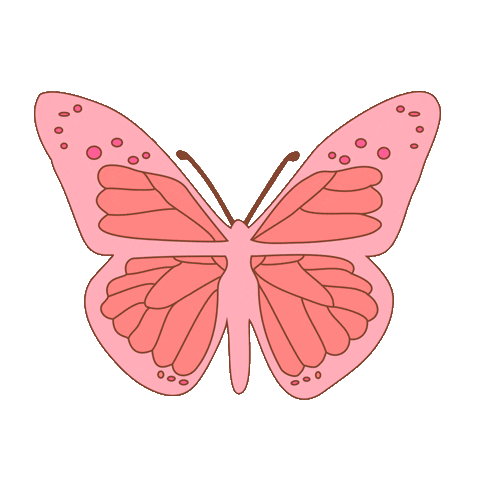Why tiny shifts create bigger transformations than dramatic overhauls.
Stop waiting for the perfect moment to change your life.
If you’ve ever started an ambitious 5 AM morning routine only to abandon it by Thursday, or downloaded a meditation app that’s been collecting digital dust for months, you’re not alone.
The self-improvement industry sells us this myth that transformation requires dramatic, all-or-nothing changes.
But neuroscience tells a different story. The most sustainable personal growth happens through small, consistent shifts that work with your brain’s existing patterns, not against them.

This is where habit stacking becomes your secret weapon for actually sticking to changes that matter.
What is habit stacking?
Habit stacking is a behavior change technique based on the psychological principle of “context-dependent learning.” We are constantly learning and adapting due to the context of the situation.
Instead of forcing yourself to create entirely new routines, you anchor learned behaviors to habits you already do automatically.
The formula is simple: After I [existing habit], I will [new habit].
Your brain loves efficiency. When you perform the same action in the same context repeatedly, neural pathways strengthen and brain-malleable plasticity allows your mind to pave new pathways.
By linking new habits to established ones, you’re essentially hijacking these existing neural highways rather than building new roads from scratch. Thus, making the behavior more automatic with practice.
Think of your current routines as the foundation of a house; habit stacking just adds new rooms without rebuilding the entire structure.

Why this Matters for Those in their 20s
Your twenties are a unique neurobiological window. Your brain is still forming around age 25, particularly the prefrontal cortex responsible for decision-making and impulse control.
This means you’re simultaneously more adaptable to change and more vulnerable to stress from major lifestyle overhauls.
Research shows that women in their 20s also face specific challenges that make traditional “dramatic transformation” approaches less effective:
- Identity formation is ongoing. You’re literally still figuring out who you are, which makes sustaining habits tied to a “future perfect self” especially difficult.
- Social pressures are intense. The pressure to “have it all figured out” creates anxiety that actually impairs habit formation by flooding your system with stress hormones.
- Cognitive load is high. Between careers, relationships, finances, and social expectations, your mental bandwidth is already stretched thin. Adding complex new routines often leads to burnout, not breakthrough.
Habit stacking works because it requires minimal willpower and cognitive resources—exactly what you need during this demanding life stage.
Real Habit Stacks that Actually Work
Here are a few examples I’ve been implementing in daily routines:
Morning Mindfulness Stack
Existing habit: Making your morning coffee/tea
New habit: While waiting for it to brew, take three deep breaths and set one intention for the day
Why it works: You’re pairing stress reduction with an existing pleasure ritual, making mindfulness feel indulgent rather than like another task.

Common thoughts: “I don’t have time for meditation.”
Reality check: This takes 30 seconds and actually improves your decision-making for the entire day.
Creative Brain Break Stack
Existing habit: Taking work or study breaks
New habit: Instead of scrolling, spend 5 minutes doodling, writing, or voice-recording ideas.
Why it works: You’re transforming passive consumption -> active creation, which research shows boosts mood and cognitive flexibility.

Common anxieties: “I’m not creative enough.”
Reality check: Creativity is a muscle that strengthens with use, even “bad” doodles count as practice.
Intentional Social Media Stack
Existing habit: Evening scroll time on TikTok/Instagram
New habit: Save one genuinely useful post per session and actually try it within 48 hours.
Why it works: You’re making passive consumption active and purposeful without eliminating something you enjoy.

Common thoughts: “Social media is rotting my brain.”
Reality check: The platform isn’t the problem—passive consumption is. Active engagement with quality content can actually enhance learning!
Analog Planning Stack
Existing habit: Making to-do lists
New habit: Write them by hand using a pen that sparks joy (sparkly gel pens count!).
Why it works: Handwriting activates different neural pathways than typing, improving memory retention and making tasks feel more intentional.

Common thoughts: “Handwriting is slower than typing.”
Reality check: The 2 extra minutes you spend writing actually save time by improving focus and task completion rates.
Evening Creativity Stack
Existing habit: Winding down before bed
New habit: Open a creative app (Adobe Fresco, Pinterest, even Notes for writing) for 10 minutes of playful exploration.
Why it works: Low-pressure creativity before sleep can improve problem-solving and emotional processing overnight.

Common anxieties: “More screen time before bed is bad”
Reality check: Active creative engagement affects your brain differently than passive scrolling—blue light filters can minimize sleep disruption.
The Quick Neuroscience behind Why Small Changes Work
- Dopamine drives habit formation. Small wins trigger dopamine release, reinforcing the behavior loop. Massive changes often delay gratification too long, causing dopamine crashes that make you quit.
- Cognitive load theory explains why. Your brain has limited processing power. Simple habit stacks use minimal cognitive resources, leaving mental energy for other important decisions.
- Identity-based habits stick better. Small changes allow you to gradually embody a new identity (“I’m someone who prioritizes creativity”) rather than trying to become a completely different person overnight.
- Compound effects are real. A 1% daily improvement compounds to 37x better over a year. Small consistent changes literally create exponential transformation over time.
Making habit stacking stick: Evidence-based strategies
Start ridiculously small. If your new habit takes more than 2 minutes, make it smaller. You can always expand later, but you need consistency first.
Use implementation intentions. Write down your habit stack using the specific “After I [X], I will [Y]” formula. Research shows this increases follow-through by 2-3x.
Track your streak, not your outcomes. Focus on showing up consistently rather than measuring results. Consistency is the skill you’re actually building.
Design for your lowest-energy self. Plan habit stacks for when you’re tired, stressed, or unmotivated. If it works then, it’ll definitely work when you’re feeling good.
Make it appealing. Use tools, apps, or materials that genuinely bring you joy. Aesthetic notebooks, favorite playlists, or cozy lighting can significantly improve adherence.
Prepare for obstacles. Identify what might prevent your habit stack and plan around it. If you usually make coffee but sometimes run late, have a backup stack for grab-and-go mornings.
The compound effect of tiny changes
The magic of habit stacking isn’t in any single habit—it’s in the cumulative effect of multiple small changes working together. When you stack 3-5 tiny habits throughout your day, you’re essentially upgrading your entire daily experience without the stress of major lifestyle overhauls.
Over time, these small shifts create a ripple effect:
- Better mornings lead to better decision-making all day
- Creative breaks improve problem-solving at work
- Intentional evenings enhance sleep quality
- Improved sleep boosts emotional regulation
You’re not just changing individual behaviors—you’re upgrading your entire system for living.
Your action plan: Start this week
Day 1-2: Observe your existing routines without changing anything. Notice what you already do consistently.
Day 3-4: Choose one existing habit and one tiny new habit to stack onto it. Write it down using the formula “After I [existing habit], I will [new habit].”
Day 5-7: Practice your single habit stack. Don’t add anything else yet—just focus on consistency.
Week 2: If your first stack feels automatic, add one more. If not, make your current stack even smaller.
Remember: The goal isn’t to become perfect. It’s to become consistent. Your 20s are the perfect time to build the foundation for who you want to become—one tiny, intentional choice at a time.
The bottom line
Real transformation doesn’t require dramatic life overhauls, 5 AM wake-ups, or perfect discipline. It requires understanding how your brain actually works and designing changes that feel natural rather than forced.
Habit stacking lets you become the person you want to be without the stress, overwhelm, or inevitable burnout of traditional self-improvement approaches. You’re not adding more to your life—you’re making what’s already there more intentional.
Start small. Stack smart. Trust the process.
Your future self will thank you for every tiny shift you make today.

References
Clear, J. (2018). Atomic Habits: An Easy & Proven Way to Build Good Habits & Break Bad Ones. Avery.
Duhigg, C. (2012). The Power of Habit: Why We Do What We Do in Life and Business. Random House.
Fogg, B. J. (2019). Tiny Habits: The Small Changes That Change Everything. Houghton Mifflin Harcourt.
Gollwitzer, P. M. (1999). Implementation intentions: Strong effects of simple plans. American Psychologist, 54(7), 493-503.
Lally, P., Van Jaarsveld, C. H., Potts, H. W., & Wardle, J. (2010). How are habits formed: Modelling habit formation in the real world. European Journal of Social Psychology, 40(6), 998-1009.
Neal, D. T., Wood, W., & Quinn, J. M. (2006). Habits—A repeat performance. Current Directions in Psychological Science, 15(4), 198-202.
Sweller, J. (1988). Cognitive load during problem solving: Effects on learning. Cognitive Science, 12(2), 257-285.
Verplanken, B., & Aarts, H. (1999). Habit, attitude, and planned behaviour: Is habit an empty construct or an interesting case of goal-directed automaticity? European Review of Social Psychology, 10(1), 101-134.
